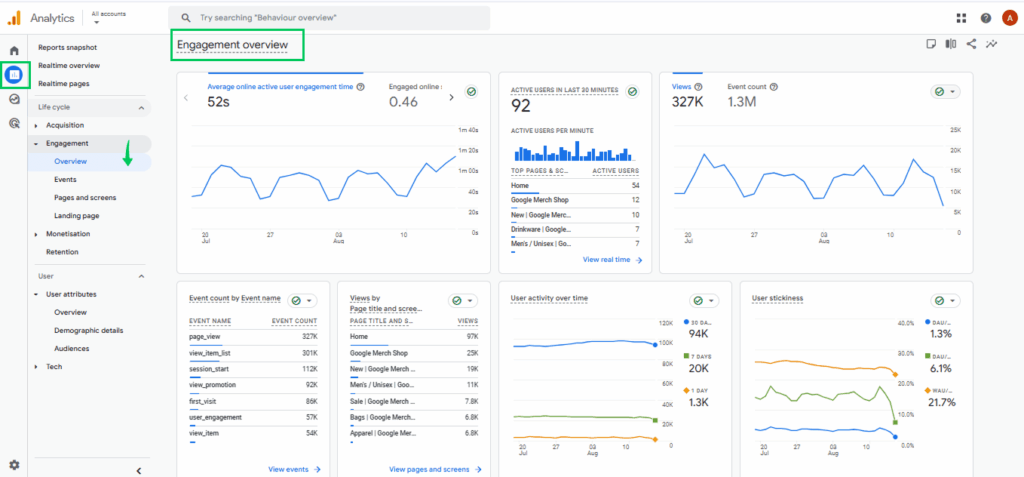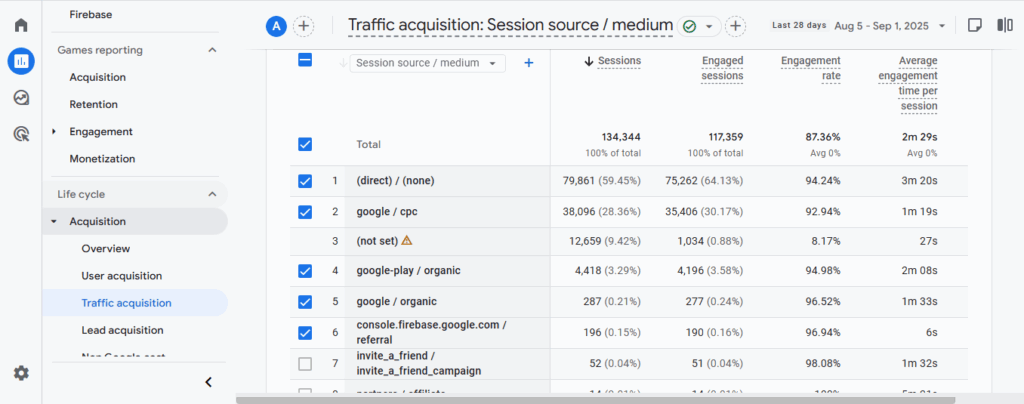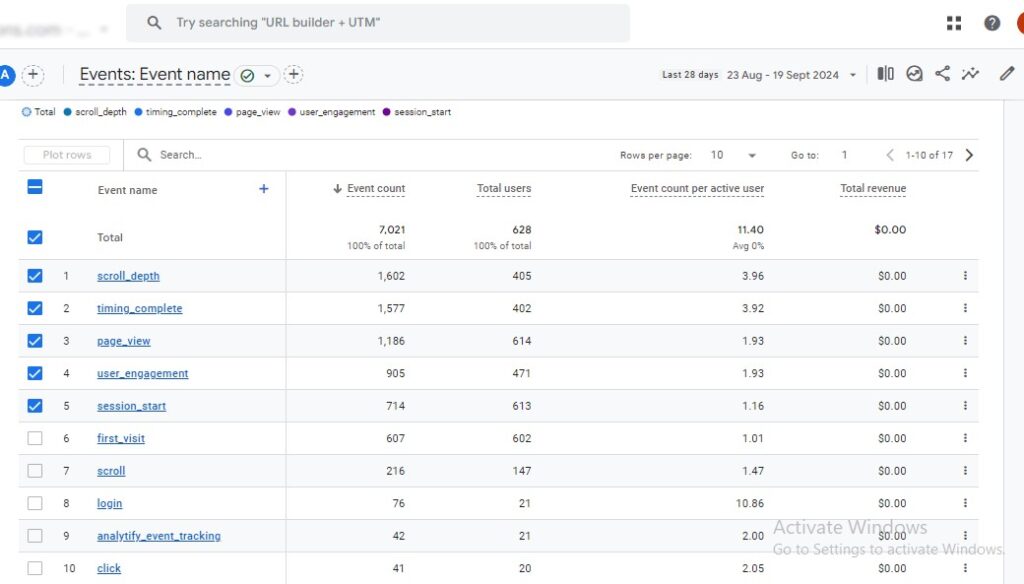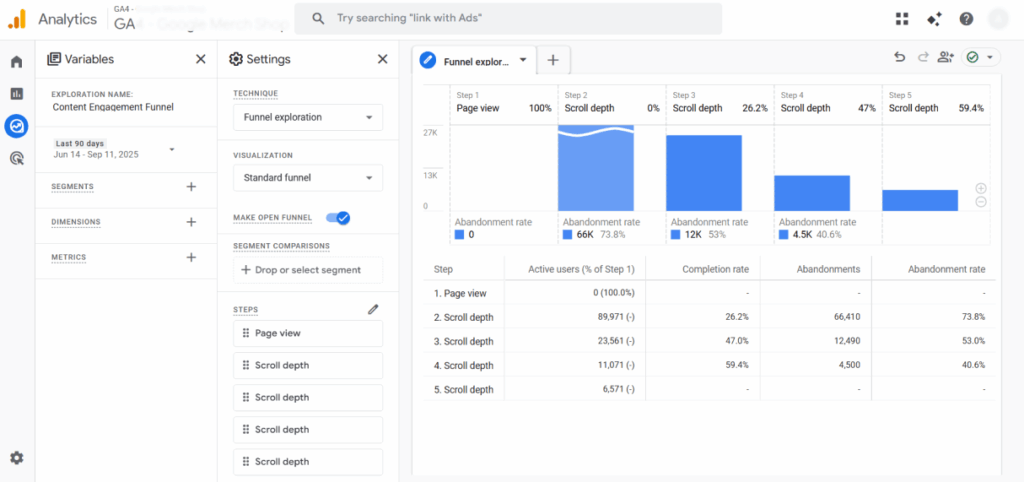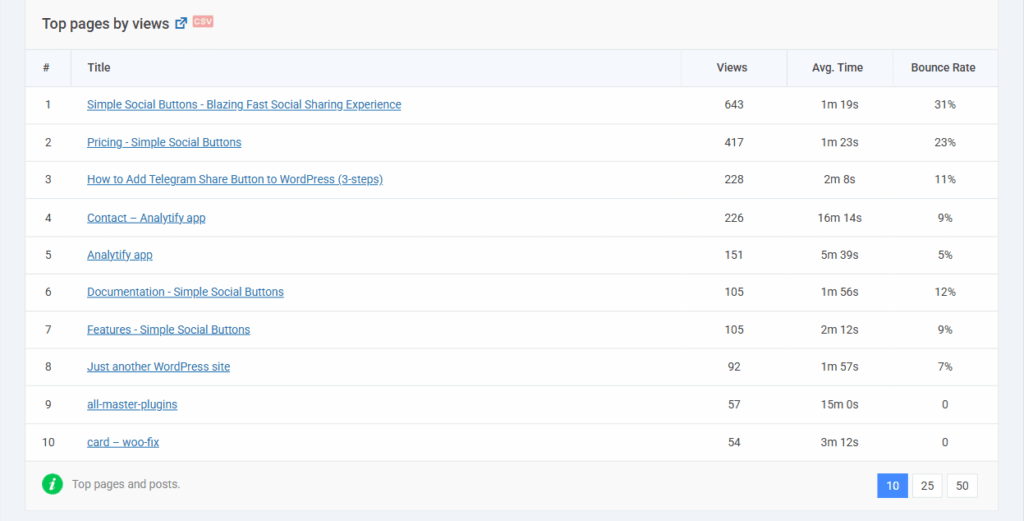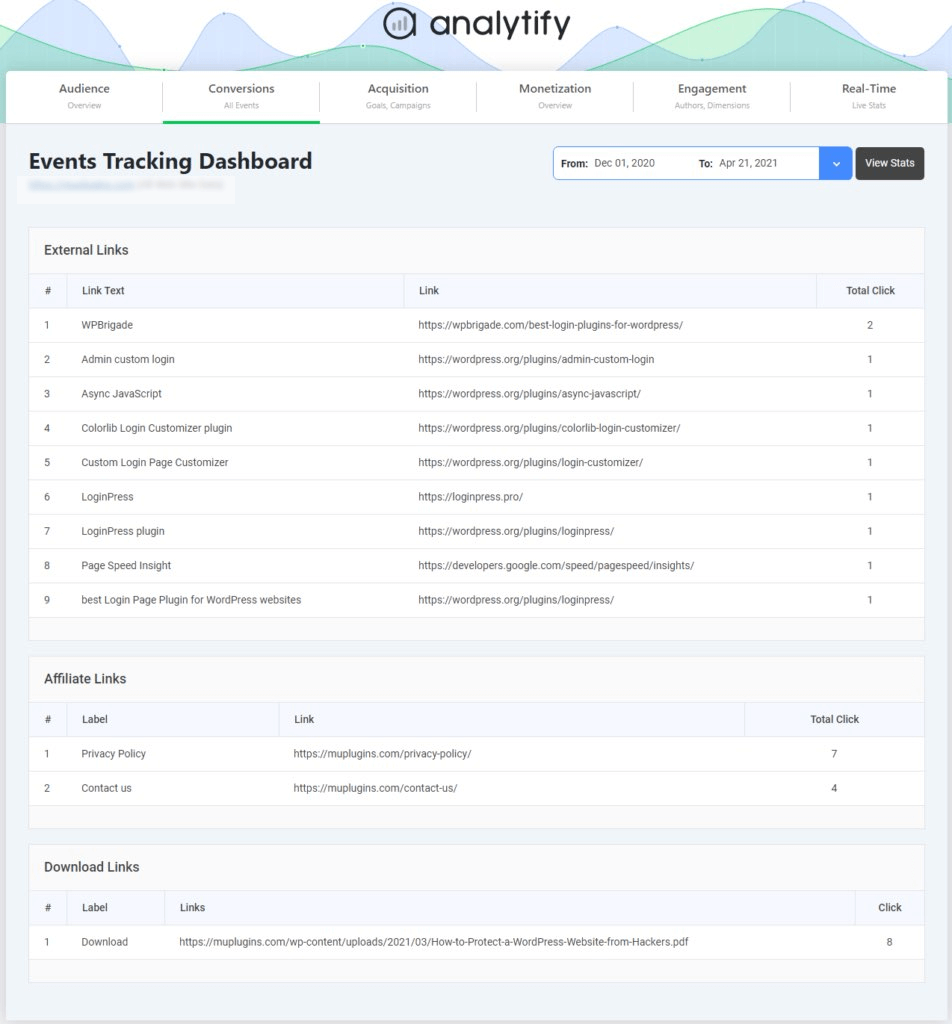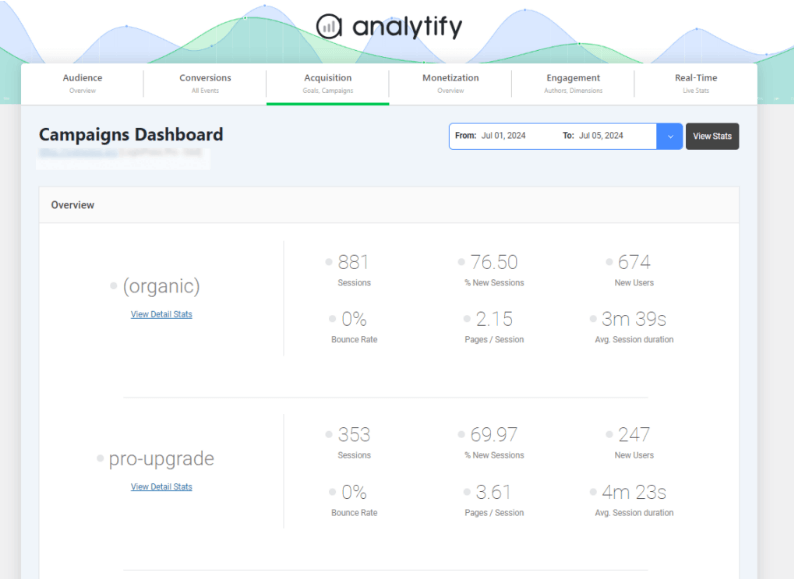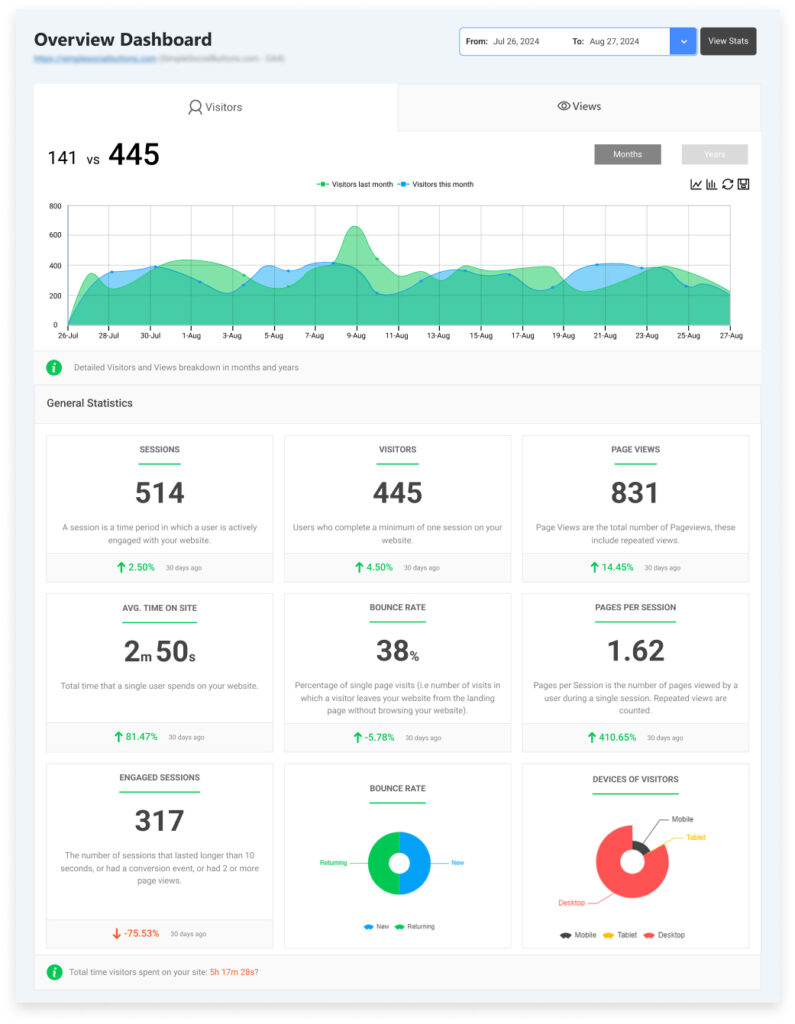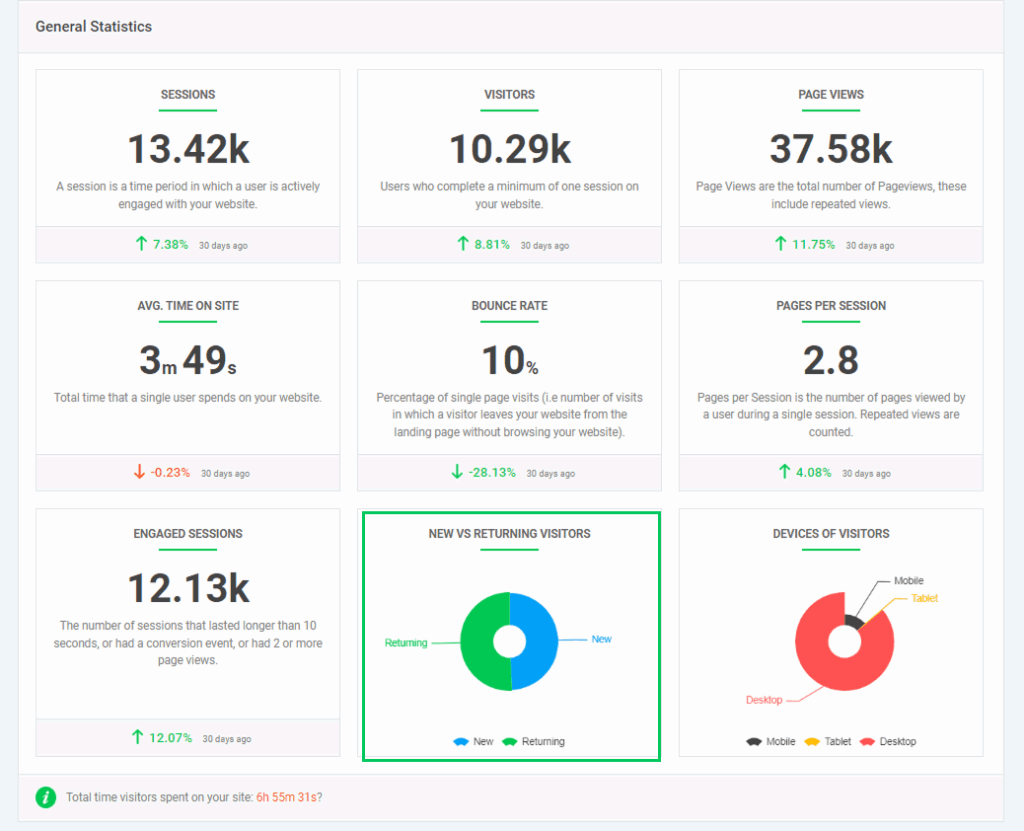
How to Identify High-Intent Traffic in GA4 (For Conversion Optimization)
Do you want to know how to perform high-intent traffic analysis in Google Analytics?
Traffic is great. But traffic that converts is even better. Most websites don’t need more visitors; they need the right visitors.
High-intent traffic includes visitors who show strong signals that they’re ready to engage or purchase. They stay longer. They view key pages. They return more than once. They complete meaningful events. When you can identify these users early, you can optimize your CRO strategy and dramatically increase conversions without increasing your ad spend.
In this article, you’ll learn:
- What high-intent traffic really means
- How to measure buyer intent using GA4 signals
- Step-by-step methods to find conversion-ready users
- How Analytify simplifies behavior analytics in WordPress
- Advanced optimization tips for improving conversions
Let’s start with the basics.
High Intent Traffic Analysis (TOC):
What Is High-Intent Traffic?
High-intent traffic refers to visitors who show strong signs that they are ready to take action, such as buying a product, requesting a demo, subscribing, or engaging deeply with your content. These users don’t behave like casual browsers. They leave signals that reveal their interest, intent, and readiness to convert.
High-Intent Traffic (Definition): When you know which users have the highest intent, you can optimize the user journey, personalize messaging, and streamline conversion paths.
How to Recognize High-Intent Users
High-intent visitors typically demonstrate behaviors like:
- Longer session duration
- Multiple repeat visits
- Viewing key pages (pricing pages, product pages, service pages)
- Completing micro-events (scroll depth, video plays, downloads, add-to-cart actions)
- Entering from high-value sources (email, branded search, remarketing campaigns)
These behavioral patterns help you measure buyer intent and distinguish conversion-ready traffic from general traffic.
Why High Intent Traffic Analysis Matters
Not all traffic has the same value. You may attract thousands of visitors, but only a small percentage have real purchase intent. Identifying these high-value users helps you:
- Prioritize CRO improvements
- Allocate marketing resources more effectively
- Create tailored experiences for users who are ready to convert
- Improve ROI by focusing on actions that drive conversions
Visitors who show strong behavioral signals (repeat visits, long engagement, event completion, landing on high-value pages) indicate they are ready to convert.
Understanding Traffic Intent in GA4
GA4 gives you powerful insights into how users behave, but understanding traffic intent requires knowing which reports reveal signals of interest, engagement, and conversion readiness. High-intent users leave a trail inside your analytics. When you learn how to read these signals, GA4 turns into a conversion-optimization engine.
1. Engagement Metrics Reveal Interest
GA4’s engagement reports help you see how deeply users interact with your site. Key indicators include:
- Average engagement time: High-intent users spend more time reading, comparing, or interacting.
- Pages per session: More pages often signal active evaluation of your product or service.
- Scroll depth: Reaching 75–90% scroll depth shows meaningful content consumption.
These engagement metrics help you identify users who aren’t just “passing by” they’re evaluating your offer. You can then optimize the GA4 user journey accordingly.
2. Repeat vs. New Visitors
GA4 separates new visitors from returning visitors.
Returning users are especially important for traffic intent in GA4 because they show:
- Repeat interest
- Product research
- Higher trust
- Greater likelihood to convert
If someone comes back multiple times, they’re signaling intent. This is often stronger than any single-session metric.
3. Source/Medium and Campaign Attribution
Traffic intent also depends on where users come from.
High-intent sources often include:
- Email campaigns
- Branded search queries
- Remarketing campaigns
- Partner referrals
- Organic search with transactional keywords
These sources typically bring visitors who are already familiar with your brand or actively searching for solutions.
4. Conversion Event Tracking
GA4 focuses heavily on events, making it ideal for spotting conversion-ready traffic.
High-intent signals from event tracking include:
- Add-to-cart events
- Form starts and form completions
- Video plays
- Button clicks (e.g., “Buy Now”)
- Download events
- Checkout steps
These micro-conversions show progress in the user journey and help you identify bottlenecks.
When you recognize which users are closest to converting, you can optimize the GA4 user journey, personalize content, improve remarketing, and focus on the strategies that truly move the needle.
How to do High-Intent Traffic Analysis in GA4 (Step-by-Step)
Below is a clear, practical walkthrough to help you identify high-intent traffic, even if you’re not a GA4 expert.
Step 1: Start With the Core Intent Signals
Before going into GA4 reports, you must understand what high-intent looks like on your website. These are the behaviors to track:
- Longer engagement time
- Multiple sessions or repeat visits
- Viewing high-value pages like pricing, product pages, features, or checkout
- Completing meaningful events (scroll depth, add-to-cart, form interactions)
- Arriving from high-value sources such as email or branded search
These signals form the foundation of traffic intent in GA4.
Step 2: Use the Engagement Overview Report
In your Google Analytics account, go to:
GA4 Reports >> Engagement >> Overview
Look for:
Average Engagement Time
High-intent users stay longer.
Compare:
- High engagement time (strong intent)
- Low engagement time (weak intent)
Engaged Sessions
Users with at least 10 seconds of interaction, 2+ pageviews, or a conversion event.
Events by Engagement
Events like:
- scroll
- view_item
- view_promotion
- generate_lead
- add_to_cart
These events show how deeply users interact with your content.
Step 3: Analyze Pages That Attract High-Intent Users
Go to:
GA4 Reports >> Engagement >> Pages and Screens
Identify high-intent pages such as:
- Pricing
- Checkout
- Product pages
- Demo or contact page
- Comparison pages
- Download pages
Then analyze:
- Engagement time on these specific pages
- Scroll depth (especially 75%+)
- Total conversions or event completions
Patterns here reveal which pages signal conversion-ready traffic.
Step 4: Compare New vs. Returning Visitors
Go to:
GA4 Reports >> User >> User Attributes >> Overview
High-intent visitors often return multiple times before converting.
Watch for:
- Increase in returning users
- Returning users are spending more time than new users
- Higher conversion rate from returning sessions
Returning traffic is usually the strongest predictor of buyer intent.
Step 5: Identify High-Intent Sources and Campaigns
Go to:
GA4 Reports >> Acquisition >> Traffic Acquisition
Filter by Session Medium or Source/Medium.
High-intent sources typically include:
- Email
- Direct / branded search
- Organic search with action keywords (e.g., “best software for…”)
- Remarketing campaigns
- Referral partners
Check these metrics for each source:
- Engagement rate
- Engaged sessions
- Conversions
- Event value
This reveals which sources drive the most conversion-ready traffic.
Step 6: Track Micro-Conversions (Events) That Indicate Intent
Go to:
GA4 Reports >> Engagement >> Events
Look for micro-events that hint at intent:
- click
- add_to_cart
- begin_checkout
- view_promotion
- generate_lead
- form_start
- video_progress
When a source or page triggers many micro-events, it almost always drives higher conversions.
Step 7: Use GA4 Explorations to Build a High-Intent User Segment
For deeper insights:
Go to Explore >> Free Form or Funnel Exploration
Create segments based on:
- 2+ sessions
- Engagement time above average
- Visiting pricing or checkout pages
- Completing key events
This segment becomes your “High-Intent User Group,” perfect for CRO, personalization, and remarketing.
What are High-Intent Signals in GA4
- High engagement time
- High scroll depth
- More pages per session
- Repeat visits
- Key event completions
- Visits to high-value pages
- Arriving from trusted, warm sources
These signals together help you find the users most likely to convert.
Track High-Intent Traffic in WordPress with Analytify
Join 50,000+ beginners & professionals who use Analytify to simplify their Google Analytics!
If you use WordPress, Analytify makes it much easier to track high-intent traffic without opening GA4 again and again. Instead of digging through multiple GA4 reports, Analytify displays your most important intent signals right in your WordPress dashboard, in a clean, readable format. This saves time and helps you act faster.
Here’s how to use Analytify to spot high-intent visitors and understand what they do on your site.
1. See Which Pages Attract High-Intent Visitors
Analytify’s Pages Report shows engagement time, views, and bounce rates for every page.
High-intent traffic usually interacts more with:
- Pricing pages
- Product or service pages
- Landing pages
- Checkout steps
- Blog posts with transactional intent
With one click, you can sort pages by engagement or conversions to instantly see which URLs are attracting visitors who are close to taking action.
2. Track Conversions and Micro-Conversions Without GA4 Setup Pain
Analytify automatically pulls your GA4 events and conversions into WordPress.
This helps you track:
- Form submissions
- Add-to-cart events
- Checkout starts
- Button clicks
- File downloads
You don’t need to manually configure GA4 event parameters. Analytify displays everything in one place.
This is especially helpful for spotting high-intent users, because micro-conversions often show intent before a purchase happens.
3. Use Campaign Tracking to Measure Intent From Email, SEO, and Ads
Analytify’s Campaigns Report helps you see which UTM-tagged campaigns attract users who actually engage or convert.
This is important because volume doesn’t always equal intent.
For example:
- Email may bring fewer users, but more buyers.
- SEO may bring more traffic, but only certain keywords drive conversions.
- Paid ads may bring quick traffic, but low-intent visitors bounce immediately.
Analytify lets you compare engagement and conversions for each campaign right from WordPress.
4. Identify High-Intent Users With Engagement + Returning Visitor Insights
Analytify highlights:
- Returning visitors
- Repeat session frequency
- Average engagement per session
- Scroll depth
- Time spent on key pages
These signals help you quickly spot which users are evaluating your brand or considering a purchase.
Advanced Tips to Optimize High-Intent Traffic
Here are advanced strategies that help you turn intent into conversions.
1. Segment High-Intent Users for Personalized Remarketing
Not all high-intent users behave the same way. Some revisit your pricing page. Some add items to their cart. Others read comparison posts.
Create segments in your marketing tools based on:
- Landing page viewed
- Source or campaign
- Event completion (add-to-cart, scroll depth, video plays)
- Sessions with high engagement time
This allows you to send tailored messages, like targeted emails or remarketing ads.
2. Use UTM Campaigns to Track Conversion-Ready Traffic
UTM parameters help you understand which channels attract buyers, not just visitors. Add UTMs to emails, social posts, ads, and influencer content.
Then use Analytify’s Campaigns Dashboard to compare:
- Engagement time
- Event completions
- Returning visitors
- Conversions
This helps you double down on channels that send high-intent traffic.
3. Prioritize High-Intent Traffic in Content and Ad Spend
If your pricing or product pages attract highly engaged users, build more supporting content around them:
- FAQs
- Tutorials
- Case studies
- Comparison guides
For ads, shift your budget toward campaigns that attract repeat visitors or users who previously interacted with key pages.
4. Set Custom Alerts for Spikes in High-Intent Visitors
Use GA4 custom insights or Analytify alerts to notify you when:
- Pricing page visits surge
- Engagement increases on key funnels
- Repeat visitors jump
- Conversions sharply rise or fall
This lets you act instantly to fix issues, launch follow-ups, or capitalize on traffic spikes.
Common Mistakes to Avoid in Identifying High-Intent Traffic
Identifying high-intent traffic is powerful, but only when you avoid a few common pitfalls that lead to wrong assumptions and weak decisions. These mistakes happen often, especially when teams focus on surface-level numbers instead of true buyer behavior.
1. Confusing High Traffic With High-Intent Traffic
A surge in visitors doesn’t always mean a rise in buyers. Many sites celebrate traffic spikes but ignore that most visitors don’t engage, scroll, or return. High-intent traffic is defined by behavior, not volume. Always pair traffic numbers with engagement metrics like scroll depth, event completions, and repeat visits.
2. Ignoring Repeat Visitors and Multi-Session Behavior
High-intent users often return multiple times before converting. If you’re only analyzing “first visit” metrics, you miss these warm prospects. GA4’s “Returning Users,” “Engagement Time,” and “User Exploration” reports help you track this behavior.
3. Not Connecting GA4 Insights With WordPress Dashboards
Many site owners gather data but never act on it. If GA4 insights aren’t visible inside WordPress, they’re easy to forget. Tools like Analytify solve this by placing key high-intent metrics, engagement time, landing page performance, and campaign traffic right where you manage content.
This makes optimization faster and more consistent.
4. Treating All Traffic Sources the Same
Email traffic behaves differently from organic search. Social visitors act differently from referral visitors. If you treat all visitors as one group, your conversions drop. Segment by source to understand which channels truly bring conversion-ready traffic.
High Intent Traffic Analysis FAQs
1. What is high-intent traffic?
High-intent traffic refers to visitors who show clear signals that they are close to converting such as long engagement time, repeat visits, product-page views, or completing key events (add to cart, form start, scroll depth). These users are considered conversion-ready because their behavior suggests strong purchase or action intent.
2. How do I measure traffic intent in GA4?
You can measure traffic intent in GA4 using engagement metrics, event completions, returning user behavior, landing page performance, and source/medium reports. GA4’s Engagement, User, and Traffic Acquisition reports are the best places to start.
3. What metrics indicate buyer intent?
Metrics such as average engagement time, pages per session, scroll depth, repeat visits, product-page views, and micro-conversions (add to cart, video play, form start) are strong indicators of high-intent behavior.
4. Can small businesses benefit from high-intent traffic analysis?
Absolutely. Even small websites see dramatic improvements when they focus on the 10–20% of users most likely to convert. It helps reduce wasted marketing effort and increases ROI.
5. How does Analytify help with high-intent traffic analysis?
Analytify pulls GA4’s complex high-intent metrics into a clean, readable WordPress dashboard. You can easily see engagement time, top landing pages, campaign behavior, referral performance, and returning user patterns without navigating GA4’s interface. This makes conversion optimization faster and more beginner-friendly.
High Intent Traffic Analysis: Conclusion
High-intent traffic is more valuable than just high traffic. Focusing on visitors likely to convert helps you get better results with less effort. GA4 provides the data, and Analytify makes it easy to see which users are ready to act, track engagement, and measure conversions directly in WordPress.
By analyzing behavior, tracking key metrics, and optimizing for high-intent users, you can turn the right traffic into real growth, improving conversions and making your marketing more effective.
You may also like to read:
- How to Track Website Traffic with Google Analytics 4
- What Is Display Traffic In Google Analytics? (Explained)
Now over to you. What’s one behavior or insight you’ve noticed in your analytics that showed a visitor was ready to convert, and how did you act on it? Share your thoughts in the comment box below

